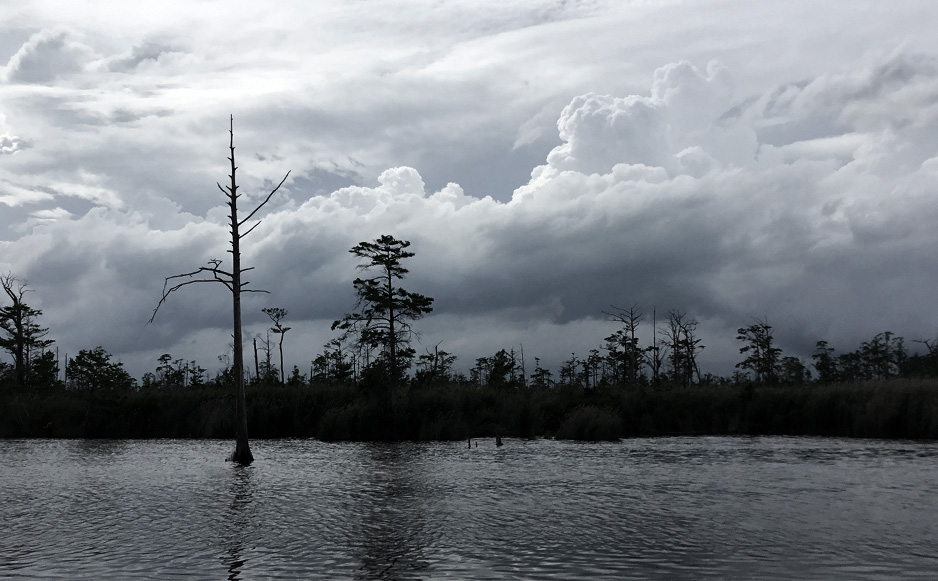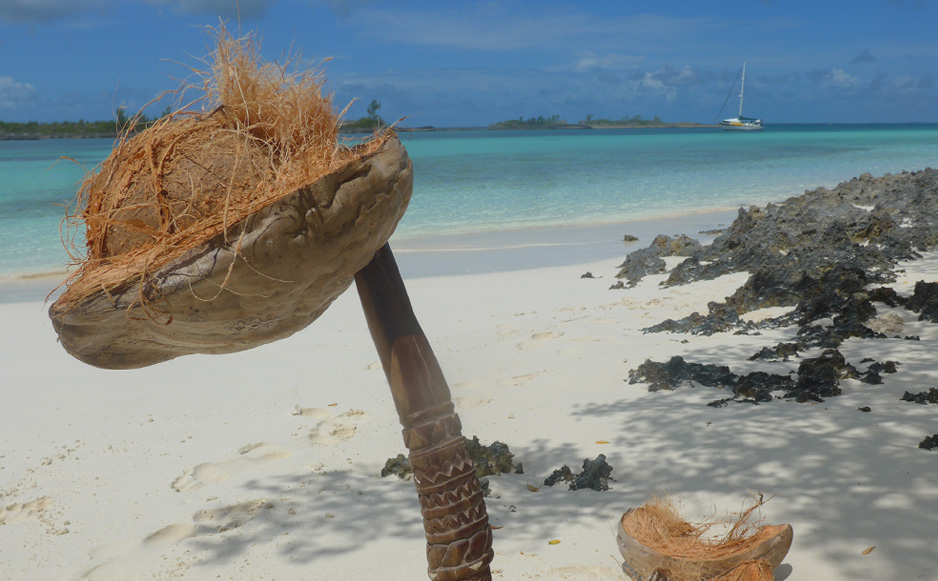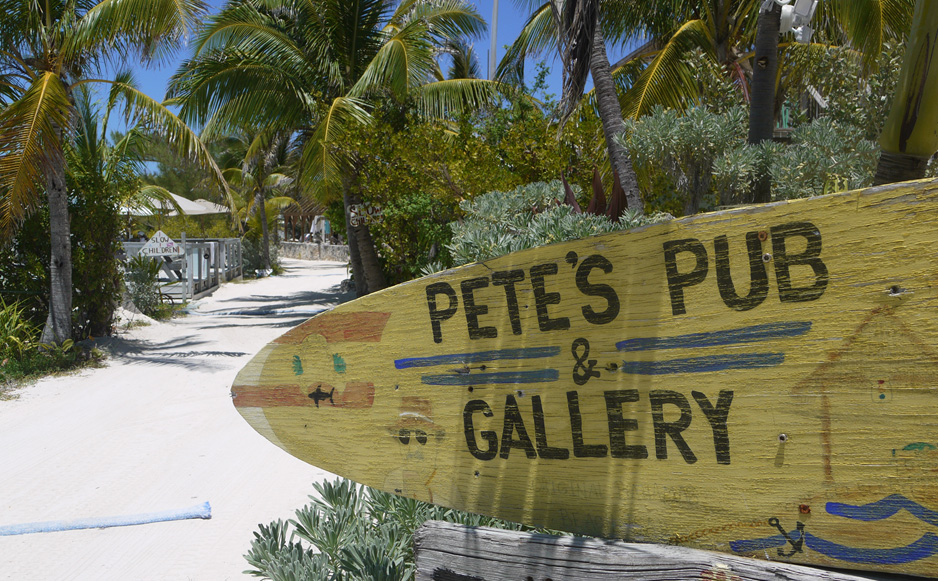
Stormy Skies
May 29, 2021 (Day 5,112)
Coinjock, North Carolina

We took this photo not long after forty knots of wind and heavy rain swept our decks. Forecasts show more to come. |

|

Scenic Route
May 27, 2021 (Day 5,110)
Goose Creek, North Carolina

"Inside or out?" The question was presented to Catherine while we were sailing the "outside" route from Charleston to Beaufort, with twenty-five knots of wind stretching sails and six foot seas chasing us across the quarter stern. She thoughtfully surveyed the open ocean for a while, registering its rolly grandeur and contemplating, no doubt, her 10:00PM - 03:00AM graveyard shift, before noting, "Well, we have had this for quite a while now." (Meaning 14 years?) "Perhaps a change would be nice."
So we're taking the "scenic" inside route, the Intracoastal Waterway, or ICW, a meandering and protected network of connected creeks, canals, rivers and bays that runs the entire length of America’s eastern coastline. The "outside" passage from Beaufort to the Chesapeake Bay would take only two days and two nights of spirited ocean sailing, very spirited sailing considering the forecast is showing wind building to thirty knots. The "inside" route by comparison, well, it'll be a peaceful, flat, five-day scenic river tour.
We'll travel just forty miles a day, motoring, or sailing under headsail, through a slice of Americana hidden from the highways. We'll anchor each night, surrounded only by trees, river grass, fields and farmland. Goose Creek, Alligator River, Rattlesnake Bay... we'll be visiting rural America, it'll feel like exploring the countryside by boat after a great flood.
Today, as we motored out of Beaufort and up the Newport River, we passed stately homes and old plantation houses resting on the side of swollen river banks surrounded by swamp trees dripping in Spanish moss. We sailed further up Adams Creek, past ramshackle homes with rusted tin roofs, camouflaged pickup trucks, old wooden docks, a confederate flag... Later in the afternoon a local woman fishing under the Hobucken Bridge threw us a casual friendly wave, the canal was so narrow we were just a few boat lengths away, as we chugged past we asked if they were biting. "Ain’t much." she said. Later we watched a bald eagle swoop down in front of Dream Time, pluck a small fish from the river, before resting on a pine branch to watch us pass.
We're anchored now in Goose Creek. It's just eight feet deep. Forests of towering loblolly pine, fields of river grass, crab pot buoys and bird song surround us this evening. Tonight we will have a full flower moon to keep us company.
|

|

Appreciation
May 24, 2021 (Day 5,107)
Wrightsville Beach, North Carolina

Another overnight passage brought Dream Time 160 nautical miles closer to New York, and it seems, with each latitude gained and the reality of land life just beyond the horizon, a renewed awareness for this sea life, like an uninterrupted sunset, takes on a more urgent appreciation. |

|

Home in Fifty
May 20, 2021 (Day 5,103)
Charleston, South Carolina

Our passage from the Bahamas to Charleston was fast, with wind not so much pushing us from behind, an angle we've grown accustomed to, but rather shoving us with a purpose from the side, gusting close to thirty knots.
Seas were impressive, too, particularly when we crossed the Gulf Stream. They were so large, in fact, that for six hours, from 0400am - 1000am, we had to hand-steer to maintain control. Life jackets were tightly secured and even the companionway washboards were locked down to seal off the cabin. One particularly impressive set of standing seas, right in the middle of the Stream where four knots of current collided with a 27 knot crosswind, had fifteen foot waves chasing us across the quarter stern. Wet, wild, salty and fast. Catherine abhorred it all! Reminding her that it was our "last offshore passage" did little to provide comfort. (For the record, I didn't enjoy it much either.)
We arrived early in Charleston, eight hours early, sailing into the channel at midnight with half a moon to steer by, and a flood tide to carry us in past Fort Sumpter - where the first shots of the Civil War were fired back in 1861. We had the anchor down by one in the morning, along with a celebratory nip of Bushmills before bedtime.
We're only in Charleston, South Carolina, just four hundred miles north of the Bahamas, but already the wind is cooler, blowing across the decks in the evening with a crispness we haven't felt since Turkey. The water has changed too. No longer can we count the links of our chain. In fact the anchor disappears entirely from view just two feet below the surface. The water is brown, the color of kava, and over ten degrees colder than the Caribbean. Board shorts will no longer do, a 3mm neoprene wet suit would be a minimum requirement, not that we have any plans to dive.
The reality of our return to New York is quickly settling in. It's exciting, no doubt, and we're looking forward to this new chapter, we have lots to do. But it's funny, and a little surprising to learn - we're not even back yet, and already I'm missing the Bahamas.
Our hook is now buried in the exact same patch of mud we anchored over in November 2007, back when we had only logged our first few hundred miles on this world voyage. But today, fourteen years later, we're just 546 nautical miles away from reaching 50,000.
So much has changed in those 50,000 miles - I wonder, would we recognize ourselves if we were to cross waypoints today, one couple sailing south at the beginning of their voyage, another heading north, on the final leg? Will we recognize New York either in a few weeks when we sail into the harbor? Or has that, too, changed so much that we will feel like strangers in a place we once called home?
Of course there's no way of knowing. It's like imagining the emotions of making landfall in the Marquesses after spending four uninterrupted weeks at sea. Or seeing the Sydney Opera house for the first time after rounding the Heads. It's impossible to say, you can guess but, from experience, it doesn't come close to touching reality. No, for that, you have to find out for yourself. But after sailing almost 50,000 nautical miles, we've come to realize, it's almost always worth the effort. |

|

End on a High
May 16, 2021 (Day 5,099)
Abacos, Bahamas

We're ready to sail up to New York, all we need is the right weather window. It's a familiar routine, one where multiple forecasts and weather models are scrutinized daily - wind speed and direction, wave height and length, rain, currents and tides... on a perfect passage all of these harmoniously align (this rarely happens) delivering the kind of conditions that would have even the most ardent landlubber unfurling and enthusiastically surveying nautical charts.
Our passages vary greatly, some are fast, wet, exhilarating downhill rides (Catherine dislikes these the most), others are slow, flat, boring and require the engine (not my favorite). But every now and again, when the seas are silky smooth, the wind gentle and comfortably on the beam, with sails raised high under clear skies by day and a full moon and a scintillating canvas of stars by night, well, you don’t ever want those to end. In fourteen years of world cruising we remember all of our perfect passages - because there haven't been that many of them.
We don't have one of those this week. But what we do have is an impressive high pressure system covering much of the east coast of America that promises to deliver conditions for a fast sail with wind gusting to twenty-five knots on the beam and seas likely building to a rambunctious six to seven feet. We won't make it all the way up to New York in one passage, that's almost nine hundred nautical miles away, but we do hope to arrive in one of the Carolinas by Thursday, the wind will decide which.
Later in the week, another weather window could provide perfect conditions from the Carolinas up to the Chesapeake Bay. But we don’t want to get ahead of ourselves, and from experience, we've learned it's best to focus on one high at a time.
(Photo compliments of Two Step’s drone - cheers Mark!) |

|

The Last Coconut?
May 12, 2021 (Day 5,095)
Abacos, Bahamas

We've opened hundreds of coconuts on this world voyage. The first few dozen were clumsy, exhausting attempts where, much like Tom Hanks' character in the movie Castaway, we hacked, chopped, threw and cursed the seemingly impenetrable husks, easily expending more energy in the process than each nut could provide in nourishment. From Belize down to the San Blas islands we tried, without much success, to perfect our method, ultimately resorting to just swinging a machete with as much wild abandon as we could muster.
But a year later, in the South Pacific, we would learn the Polynesian method, where locals, using nothing more than a pointy stick, would effortlessly free nut from husk with just a few twists of the wrist. After observations in the Marquesas, some lessons in the Tuamotus, and witnessing a coconut opening festival in Fiji (the winner miraculously separated husk from nut in four seconds!) we abandoned the machete and went looking for a pointy stick.
We found our stick in the Tuamotus, an old piece of ironwood (a hard, heavy native wood often found in the tropics) and after experimenting with the right shaped pointy end, we were successfully opening coconuts in under a minute. We've mastered the process now, de-husking the average nut in about ten seconds - not too bad for city folk. And as a tribute to the isles of Oceana where we mastered the skill, we've carved Polynesian and Fijian symbols along the shaft. The coconut spike now hangs inside Dream Time's cabin ready for use, the pointy end polished from opening hundreds of nuts over the last decade.
Catherine returned yesterday from a two-hour kayak with what, perhaps, could very well be our last coconut of this world voyage. A weather window looks promising later this week so by Sunday we may be on our way to New York. I opened the coconut ashore this morning, hoping to show off my mad skills to anyone interested, or bored enough to watch, and perhaps save a new cruiser, like us fourteen years ago, a lot of time, effort and frustration. Unfortunately there was no one ashore to impress with my skills, but if you're interested in a private lesson, visit Gaston in Toau, he's the master, or contact us in New York next month, I'll be happy to give you a few pointers. Opening them is easy, finding a whole coconut in New York, however, may prove to be a little more difficult. |

|

Climbing Latitudes
May 2, 2021 (Day 5,085)
Little Harbour, Abacos, Bahamas

Dream Time's getting ready to sail up the coast of America, back to New York, an 850 nautical mile passage, or about a week at sea, a voyage that will carry us through 14 latitudes, from 26 degrees north, up to 40 degrees - the Caribbean to the Long Island Sound. It's unlikely we'll have favorable winds for seven consecutive days, so we've set waypoints in Charleston, Cape Lookout and the Chesapeake Bay. To prepare for the voyage we're taking advantage of the sheltered waters inside Little Harbour to inspect our rig aloft and repair the anemometer which, for the last few months, has registered a steady '0.0' of wind speed. We're happy to report that the rig, which we replaced in Australia only three years ago, appears to be in fine shape, and that the anemometer is currently reading '10' knots of a southerly breeze blowing across the mast. Dream Time is ready to head north. |

|

Happy Hour
May 1, 2021 (Day 5,084)
Little Harbour, Abacos, Bahamas

Celebrating our arrival with a cold Kalik.
Dream Time wet her keel yesterday in the open Atlantic. It wasn't a long passage, just a 58 mile sail from Eleuthera to the Abacos - the northern most Bahamian island chain, but our rhumb line carried us from sheltered lagoons and shallow banks into open ocean which, still brooding from a recent cold front, carried larger waves that rolled and crested, some peaking to a spirited eight feet, before tumbling into troughs or onto our decks. We can only guess what the wind was blowing, 18-20 knots seems about right, as our wind anemometer decided to stop working weeks ago. If Mr Beaufort was onboard, he'd most likely claim we had a force five, or a "fresh breeze" stretching our canvas. It was good practice, as later this month we will begin our final climb north, back to New York.
We're moored inside Little Harbour, a delightfully protected natural bay that's not only home to a community of sea turtles that float at the surface in almost every direction you look, but it's also home to a small community of locals, Bahamians and expats, who choose to live a quiet life away from the crowds. There's no mains electricity here, or fresh water, but solar power, generators and collecting rain seems to sustain this community well enough.
It's not without a degree of irony that now we're just a month away from completing our world voyage, returning to New York and all the distractions of a busy world, that we find ourselves in a community founded by an adventurous American desperate to escape it. In 1952 Randolph Johnston, a Smith College professor, stuffed his family and worldly belongings into a modest schooner to escape the maddening rush of civilization. He discovered Little Harbour, which was then entirely uninhabited, and declared it his new home. The family lived in a cave while they built their Robinson Crusoe-style house (a book that inspired old Randy as a child), and for the rest of his days, until 1992, Randolph devoted himself to his art - casting bronze sculptures and statues, whilst living a life free from the distractions and pollution of a developed world.
We're not entirely sure how it will feel to be back in New York, the transition will likely be just as daunting, exciting and chaotic as our move onto Dream Time over five thousand days ago. But ironically, unlike Randolph, who had to escape city life to pursue his art, I need to return in order to fully pursue mine. After-all, to seek new experiences, ideas and challenges, makes for an exciting life, regardless of which direction you're heading in. |

|

 |
|